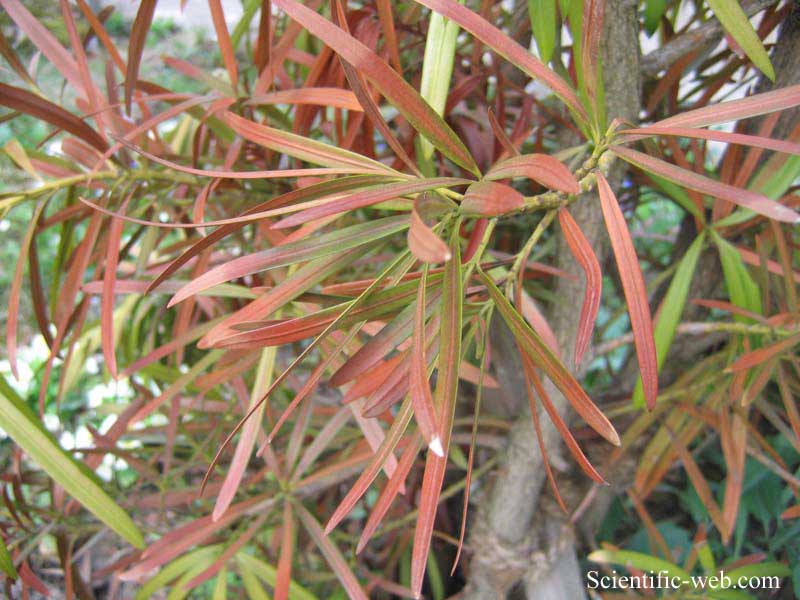Podocarpus macrophyllus, Photo: Michael Lahanas Cladus: Eukaryota Name Podocarpus macrophyllus (Thunb.) Sweet References * Hortus Suburbanus Londinensis 271. 1818 --------- Podocarpus macrophyllus (Kusamaki or Inumaki) is a conifer in the genus Podocarpus, family Podocarpaceae. It is the northernmost species of the genus, native to southern Japan and China. Kusamaki (クサマキ) and Inumaki (犬槇) are Japanese names for this tree, and Kusamaki is increasingly being used as the English name as well, replacing the old, botanically inaccurate names Buddhist Pine and Fern Pine (it is not a pine). In China, it is known as 羅漢松 luo han song. It is a small to medium size evergreen tree, reaching 20 m tall. The leaves are strap-shaped, 6–12 cm long, and about 1 cm broad, with a central midrib. The cones are borne on a short stem, and have 2-4 scales, usually only one (sometimes two) fertile, each fertile scale bearing a single apical seed 10–15 mm. When mature, the scales swell up and become reddish purple, fleshy and berry-like, 10–20 mm long; they are then eaten by birds, which disperse the seeds in their droppings. Symbolism, cultivation and uses Kusamaki is the state tree of Chiba Prefecture, Japan. It is a popular large shrub or small tree in gardens, particularly in Japan and the southeastern United States. The ripe cone arils are edible, though the seed should not be eaten. Because of its resistance to termites and water, inumaki is used for quality wooden houses in Okinawa Prefecture, Japan. Buddhist Pine is highly regarded as a feng shui tree in Hong Kong, giving it a very high market value. In recent years, the illegal digging of Buddhist Pine has become a problem in the city.[1] References 1. ^ Conifer Specialist Group (1998). Podocarpus macrophyllus. 2006. IUCN Red List of Threatened Species. IUCN 2006. www.iucnredlist.org. Retrieved on 12 May 2006. Source: Wikispecies, Wikipedia: All text is available under the terms of the GNU Free Documentation License |
|

